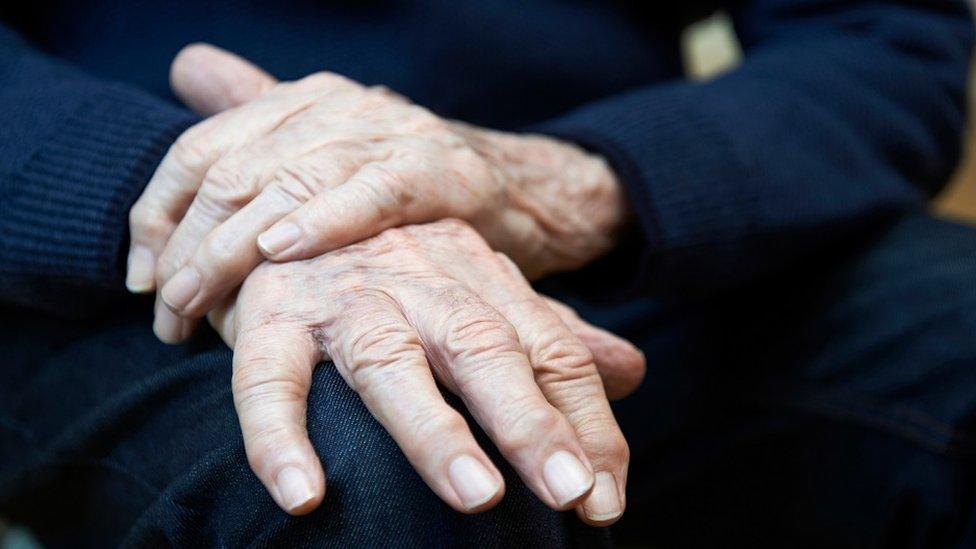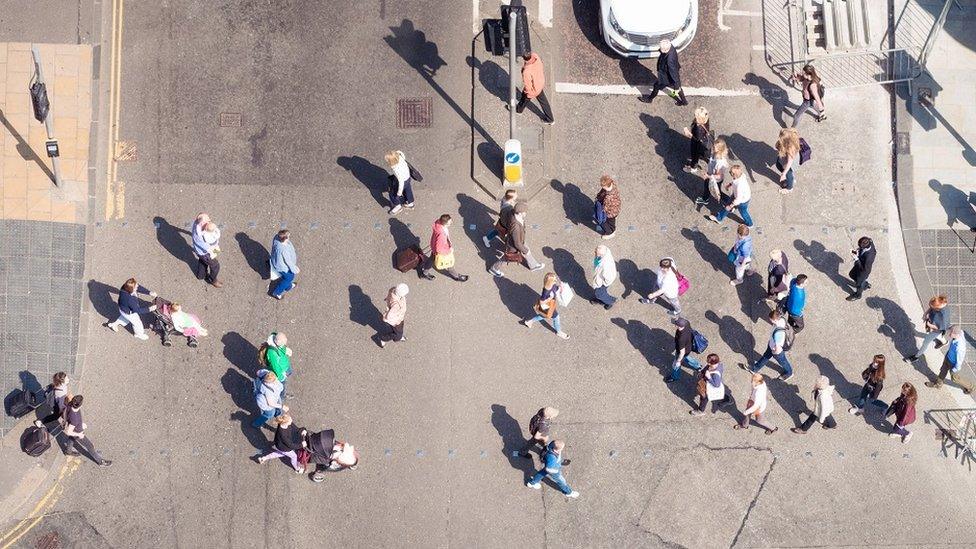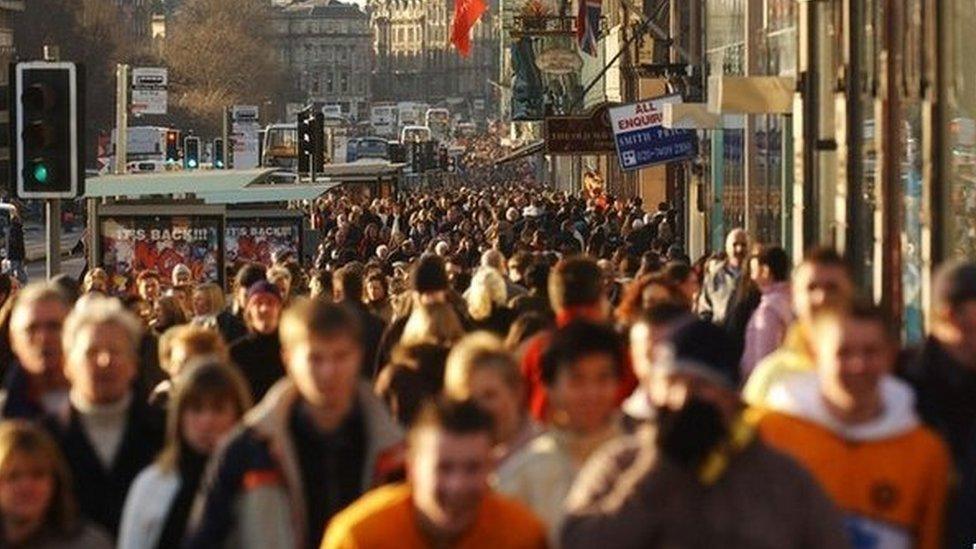Life expectancy rise in Scotland grinding to a halt
- Published
- comments

The rise in life expectancy in Scotland is grinding to a halt, according to two new reports.
In the decades after World War Two, there was a steady increase in the length of time men and women were expected to live.
But over the last seven years Scotland has seen the slowest growth in life expectancy since at least the 1970s.
New research has also revealed that, external death rates have started rising in deprived areas of the country.
Experts described it as a "worrying trend" and said that the figures were a "warning light" for the public's health.
How does life expectancy compare to the rest of the UK?
Scotland has the worst life expectancy for all UK countries.
Life expectancy is an estimate of the average number of years a new born baby would live based on that area's age specific mortality rates.
Girls born in Scotland between 2015 and 2017 can expect to live until they are 81.1, according to the National Records for Scotland (NRR).
Life expectancy for boys born in the same period is 77 years.
In England, life expectancy for girls is two years higher, and for boys it is 2.5 years higher.
Girls born in Wales and Northern Ireland can expect to live until they are 82.3 years old.
For boys the figures are also similar - 78.3 years in Wales and 78.4 years in Northern Ireland.
But the NRR revealed last year that Scots' life expectancy had fallen for first time in 35 years.
What do the new reports say?
The reports, both published by NHS Health Scotland, external, paint a dismal picture of life expectancy in Scotland.
They found that between 1992 and 2011, it took 5.5 years to add a year to a woman's life expectancy and four years for a man.
But current trends suggest it will take nearly 21 years for women to start living an extra year, and 11.5 years for men.
At the current rate, it will be 2058 before girls born in Scotland can expect to live as long as females in England could in 2016. For males, it will be 2045.

Dr Gerry McCartney, head of the public health observatory at NHS Health Scotland, said: "What we see here is a worrying trend.
"Life expectancy not only gives an indication of how long people are likely to live, but also serves as a 'warning light' for the public's health."
What caused the increase in death rates?
Between 2006 and 2011, death rates were lower across all of society - including in the most deprived areas.
But the reports show from 2012 to 2017, death rates in poor areas increased by 1% - a figure which highlights inequalities in health between the richest and the poorest, according to the experts.
Dr McCartney said this pattern gave "cause for concern".
He also said that cuts to council budgets and pressures on key local services like social care could be behind the divide.
Dr McCartney continued: "There are likely to be a number of factors at play. The strongest candidates are recent policies that address recent economic setbacks which have reduced spending on benefits, squeezed incomes and trapped people in poverty - these may all have contributed.
"There have been some severe flu outbreaks in recent years which will have increased demands on services too.
"All of these factors - and more - are likely to be important in explaining the recent trends. Whilst there is further work to do to clarify the causes, we know enough to recommend action now."
How can life expectancy be improved?
Charity boss Jim McCormick, associate director (Scotland) of the independent Joseph Rowntree Foundation, has criticised the systems that "sweep people into poverty".
He said: "As a country we believe in protecting each other from harm.
"But today's findings show our record on tackling poverty and health inequalities in Scotland is unravelling. It cannot be right that someone's life expectancy is held back by where they live or how much money their family has.
"A rising tide of in-work poverty and high housing costs, combined with the benefits freeze, are making it harder for people to achieve a decent life.

Dr McCartney called on national and local governments and employers and communities to work together on the issue.
He added: "Protecting budgets for services that determine our health (like social care, housing, social security benefits and so on) and ensuring they are provided according to need is crucial.
"Reducing poverty for all groups across the population and protecting the most vulnerable is also necessary. And, we need to maximise the take-up of the flu vaccine amongst all those who are eligible.
"With a concerted effort, based on the best available evidence, I believe it is possible to reverse the trends we've highlighted, and create a fairer healthier Scotland for all."
Public Health Minister Joe FitzPatrick argued that it was "difficult" to pinpoint the cause of changing trends, but highlighted that the Scottish government has given local authorities a "fair funding settlement" despite cuts from Westminster.
He said: "The issues are complex and relate to an ageing population, inequalities, deprivation and poverty. This report suggests the pattern is similar in England and Wales, the USA, Iceland and Northern Ireland and that austerity is having a hugely adverse impact.
"We remain focussed on addressing the underlying causes that drive health inequalities."
- Published25 September 2018

- Published25 September 2018

- Published14 May 2018
